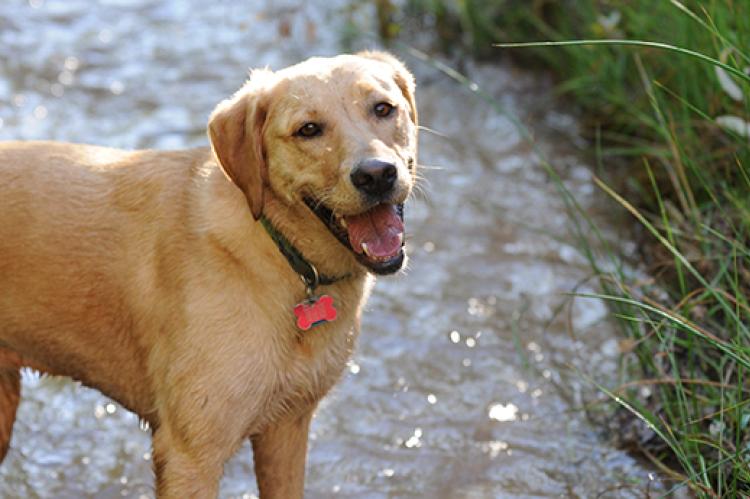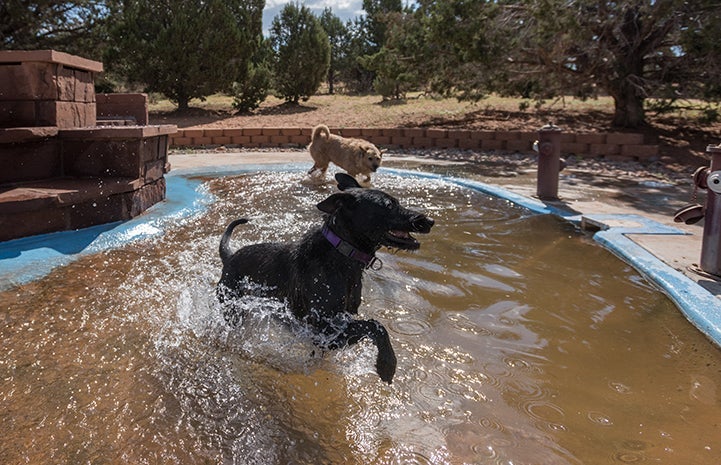Summer Pet Safety Tips: Keeping Dogs and Cats Safe in Hot Weather

Enjoying a beautiful summer day with your pet is great, but the heat can also be dangerous or even deadly for dogs and cats. Luckily, with just a few precautions, you can keep pets safe and cool in hot weather.
Heatstroke in dogs and cats
Heatstroke in dogs and cats can occur when the animal’s body temperature rises to a critical level. Normal body temperatures for dogs and cats range from 100 to 102.5 degrees Fahrenheit. When a dog’s temperature rises to 108 degrees, or a cat’s to 106 degrees, they can suffer irreparable organ damage and even die. Pets exhibiting signs of heatstroke might be distressed, weak, panting and breathing heavily, and have a dark red to purple-colored tongue, and they might throw up.
Move a pet suffering from heatstroke out of the heat immediately. Cool the animal’s ears, belly, and paw pads with cool (but not freezing or icy) water. Do not put an animal in cold water or cover them with a cold, wet blanket. Once the pet is stabilized, take them to the veterinarian as soon as possible. The animal might be experiencing issues internally that are not visible to you.
A variety of situations — such as leaving a dog in a hot car, going for a midday walk with your dog, or simply leaving a pet in the yard with no shade — can contribute to an animal overheating.
Watch this video to see how quickly a car can heat up on a 95 degree day.
Hot weather pet safety tips
Best Friends Animal Society recommends taking a few simple precautions to keep dogs and cats healthy and comfortable as the temperature rises. Here are some hot weather pet safety tips:
- Keep pets indoors during the day. It might sound obvious, but it’s hottest outside when the sun is up. Quick walks and bathroom breaks are OK, but try to keep your pets in the shade.
- If pets do spend time outside during the day, ensure that they have access to shade at all hours of the day. Dogs on tethers are especially vulnerable because they could become tangled in the tether out of reach of shade or water. Grass and greenery help keep the yard cooler, too.
- Provide pets with fresh, cool water at all times. During the heat of summer, water should be dumped and refilled often. Most dogs won’t drink hot water no matter how thirsty they are.

- Exercise dogs during the cooler morning or evening hours, not in the intense afternoon heat. Dogs who are seniors, overweight, have thick fur, or a pushed-in nose (such as boxers, pugs, and Pekingese) are even more at risk of overheating. Bring water for both you and your pet or a collapsible bowl if there’s a water source on your route.
- Be aware of the temperature of the sidewalk, asphalt, sand, or even packed dirt. The heat can cause burns to your pet’s paw pads if they get too hot.
- Consult a veterinarian about whether your pet needs a pet-approved sunscreen on exposed areas. Dogs with bald patches or minimal coats might need sunscreen, as well as Nordic breeds of dogs, who are prone to autoimmune-related sun diseases.
- Never leave your pet in a parked car when the outside temperature is above 70 degrees Fahrenheit — not even with the windows partway down, not even in the shade, not even for a quick errand. Dogs and cats can’t sweat like humans, so they pant to lower their body temperature. If they’re inside a car recycling very hot air, panting gives no relief, and heatstroke can happen quickly.
A little empathy goes a long way in protecting our pets from extreme weather. If it’s too hot for us to stay comfortable in the car, in the yard, or on a walk, it’s even hotter for our furry friends.